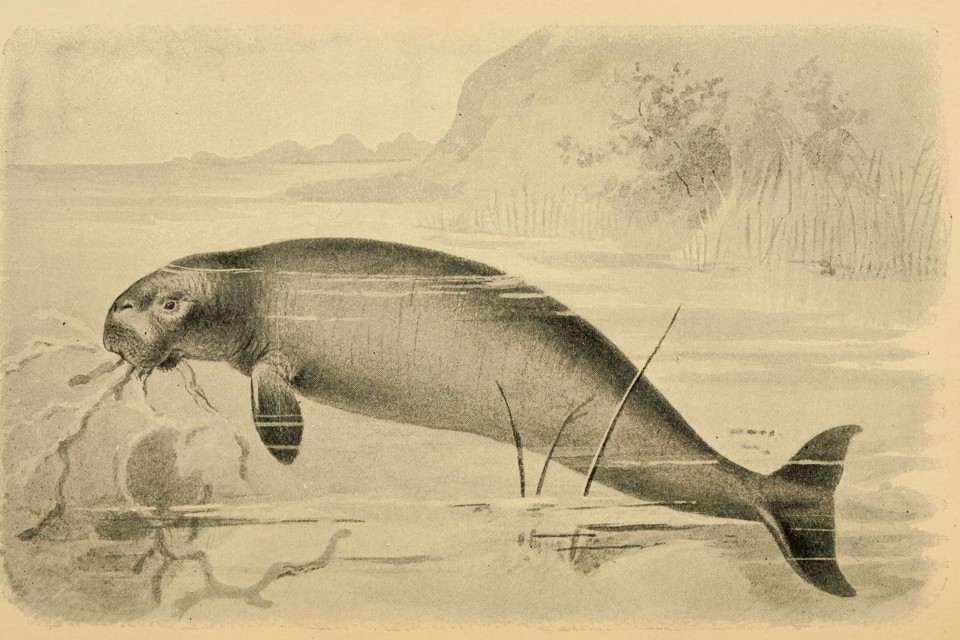Manatee Facts – Unlock the Secrets of the Steller’s Sea Cow!
The largest Sirenian that ever existed was the extraordinary Steller’s Sea Cow. It measured 30 feet in length and weighed in at 10 tons.
Greetings! Today I’d like to talk about the extraordinary Steller’s sea cow, which as the largest only cold-water member in the scientific order Sirenia. In this scientific order, you will also find manatees and dugongs and even though we can look like sea lions or whales, ironically, the closest relatives are actually elephants and hyrax.
Sirenians are herbivores, eating seagrass and aquatic plants. And in the case of the Steller’s sea cow, its primary food was kelp. The now extinct Steller’s sea cow was an incredible 3 times longer than the manatee and dugong of today and it got its name in 1741 by German naturalist Georg W. Steller, who was part of a voyage of discovery in the North Pacific.
There are several differences between the Steller’s sea cow and us manatees. These include…
- The Steller’s sea cow tail is fluked like a dugong or whale’s tail, where a manatee has a paddle-shaped tail.
- The Steller’s sea cow went extinct in the late 1700’s due to humans hunting and eating it. In 1741 there were approximately 2,000, however by 1768 the marine mammals were completely wiped out!
- The Steller’s sea cow was incredibly large, which made it 3 times as big as a manatee.
- The Steller’s sea cow also lived in very cold water and had 3 to 4 inches of fat around its outer body to protect it from the harsh marine conditions. Whereas the manatee and dugong live in warm tropical waters with very little body fat.
- The Steller’s sea cow averaged 30 feet in length and weighed an incredible10 tons! Clearly, the Steller’s sea cow was the biggest member of Sirenians and was much larger than the manatee and dugong of today!
- The Steller’s sea cow was found in the very cold waters of the North Pacific, especially around the Bering Island.
- Steller’s sea cows did not have teeth. Instead it had pads of keratin with v-shaped ridges that were found in the upper and lower jaws. It used these pads to grind up plants for food.
- The color of Steller’s sea cows was brown.
If you see any sick or injured manatees, please call the Florida Fish and Wildlife Conservation Commission at: 1-888-404-FWCC. They are the folks who are responsible for rescuing us in Florida.
Here’s the Save the Manatee Club link to learn more about us manatees …
Here’s a cool link for you to learn more about how we’re rescued and brought into rehabilitation …
~ Kobee Manatee
Related Posts
Manatee Trivia (Part 9) – More about the Steller’s Sea Coe! October 18, 2017
Manatee Trivia (Part 6)…The Steller’s Sea Cow! June 15, 2017
Manatee Trivia (Part 8) – The Dugong! October 10, 2017
Manatee Trivia (Part 1)! March 29, 2017
Manatee Trivia (Part 2)! April 6, 2017
